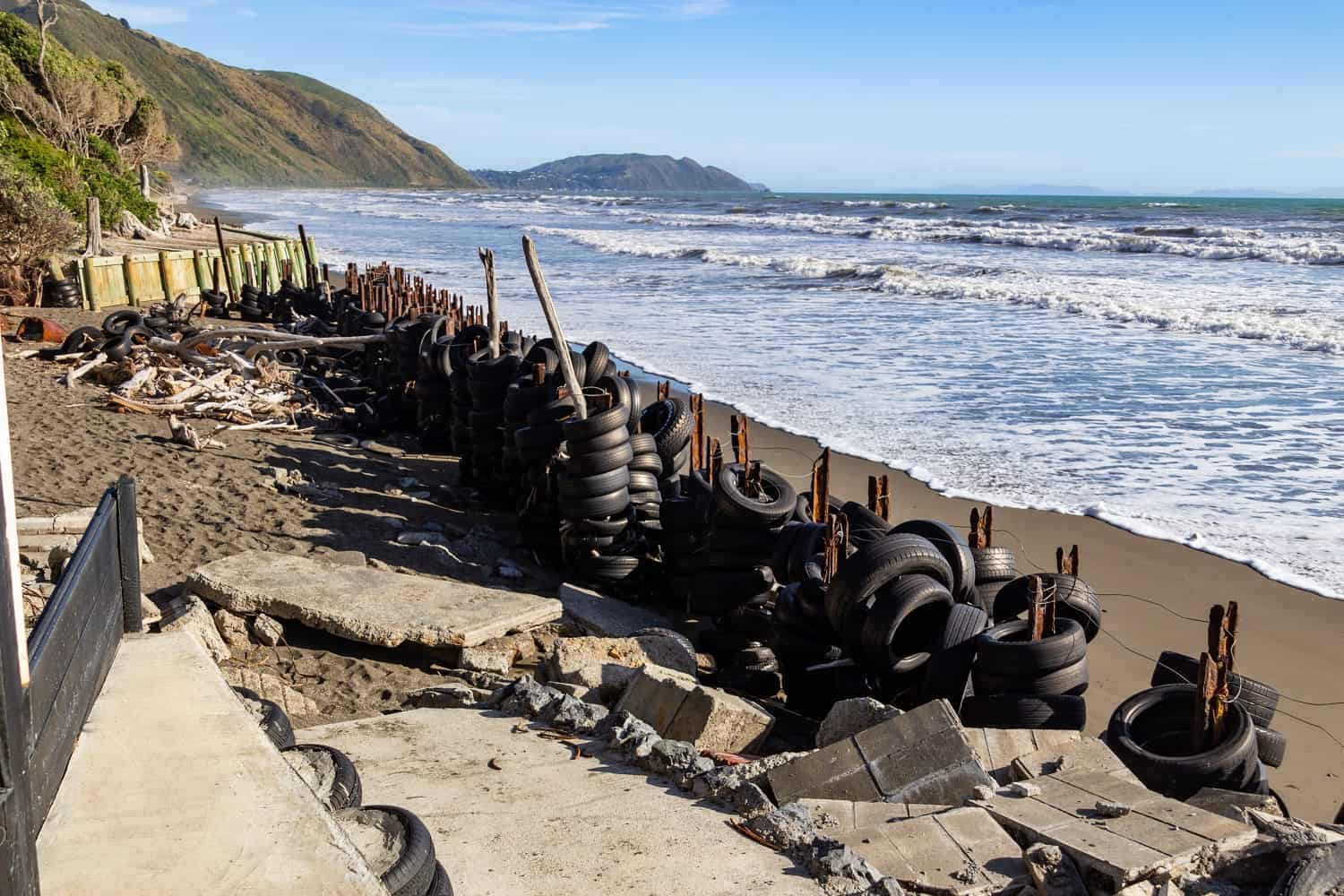Managed retreat; unpacking the ‘black box’
By Emma Ryan
Low-lying coastal communities around New Zealand will need to start embracing managed retreat as climate change and sea-level rise continue to encroach on and erode our coasts. However, managed retreat remains a ‘black box’ in New Zealand, with few successful examples. The Resilience Challenge‘Living at the Edge – Transforming the Margins’Co-creation Laboratory is using insights gained from a critical review of international and national literature on managed retreat at the coast to start to unpack this ‘black box’.
What is managed retreat?
Managed retreat is the calm and planned retreat of communities and infrastructure away from coastal areas before they are severely impacted by coastal hazards, including sea-level rise. The idea is that we need to deliberately move our existing buildings and infrastructure, as well as planned developments, away from at-risk coastal areas before the sea-level rises so much that those assets are destroyed by flooding or erosion or become uninhabitable. Managed retreat is a way for coastal communities to relocate slowly, in a carefully thought-out and planned process, before it’s too late and retreat becomes inevitable, but haphazard and ‘unmanaged’.
The alternative
Other coastal adaptation options involve protecting existing communities with built structures like seawalls and groynes. While these options usually only require a one-off cost for construction and regular maintenance costs, and eliminate the need for communities to relocate, they don’t allow the coast to naturally migrate and they change the natural character of the coast, often exacerbating erosion of the beach and causing downstream effects. Managed retreat, however, involves many staged actions over multiple years or even decades. It is a much more complex solution that requires flexible short and long-term planning tools and approaches. While seemingly more difficult in the short term, managed retreat results in ultimately more stable relocated communities and infrastructure, allowing for natural coastal migration and unexpected change.
As beneficial as engaging in managed retreat before disaster strikes might be, the reality for many coastal communities is that managed retreat is a decision that has been shaped by post-hazard crisis. It can appear a disruptive and costly process that can be hard for a community to commit to if they don’t feel they have to, so often it takes a hazard event like a tsunami or extreme storm to spur them into acceptance of managed retreat.
What makes a community engage in managed retreat?
As part of theLiving at the Edgeprogramme researchers investigated approaches to managed retreat that have been undertaken both nationally and internationally in developed countries. They wanted to find out what factors shape the outcomes of managed retreat initiatives. The team found that there are key enablers and constraints that shape the implementation of managed retreat approaches. Legislation and governance drive the managed retreat decision-making processes, and affect whether managed retreat is supported financially and socially. Indeed, international examples of successful managed retreat were all driven and funded by national or federal governments. However, they aren’t the only influencing factor. The nature and history of coastal hazard risk and shoreline management practices can play an important role in influencing a community’s perspectives about and willingness to consider managed retreat processes too. If an area has historically been evacuated and communities relocated after a coastal hazard event, it is much more likely that the existing community will be open to engaging in managed retreat. At the end of the day, managed retreat requires strong community buy-in, and early, in depth engagement with communities. Understanding social and cultural values were highlighted as two very important steps in developing detailed managed retreat strategies.
Ensuring our retreat is managed
Managed retreat might be the mysterious ‘black box’ of coastal adaptation in New Zealand right now, but our regulatory authorities and communities will need to start unpacking it very soon. We need to increase our understanding of managed retreat so that we can get communities on board, as managed retreat clearly requires a collaborative approach and early community engagement, to address the why, where, how and when questions. Ideally, we need to develop staged and adaptive strategies that allow managed retreat to be carried out with enough time before hazard risk thresholds are reached.




